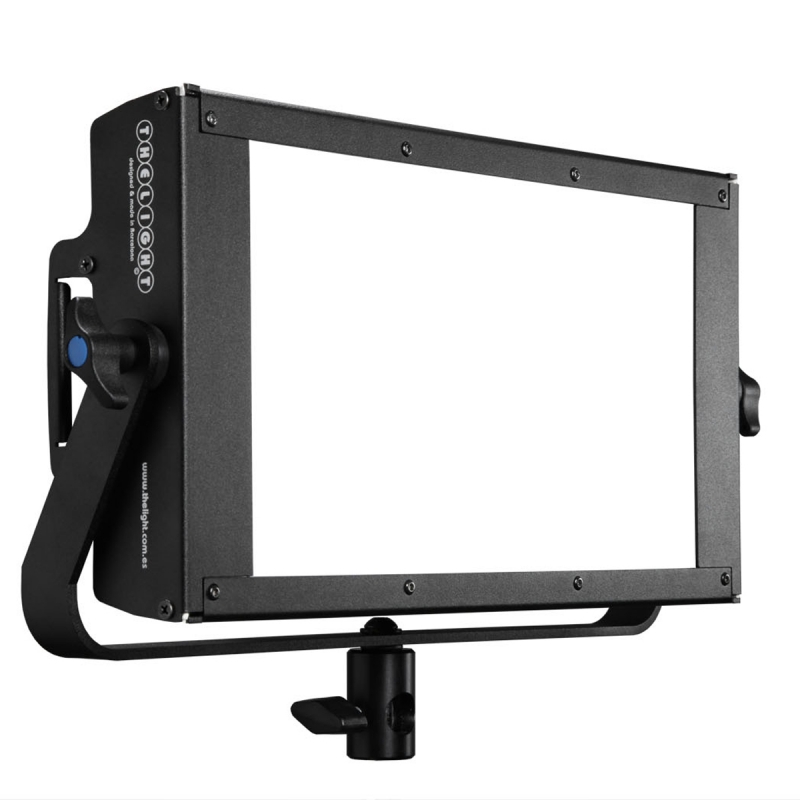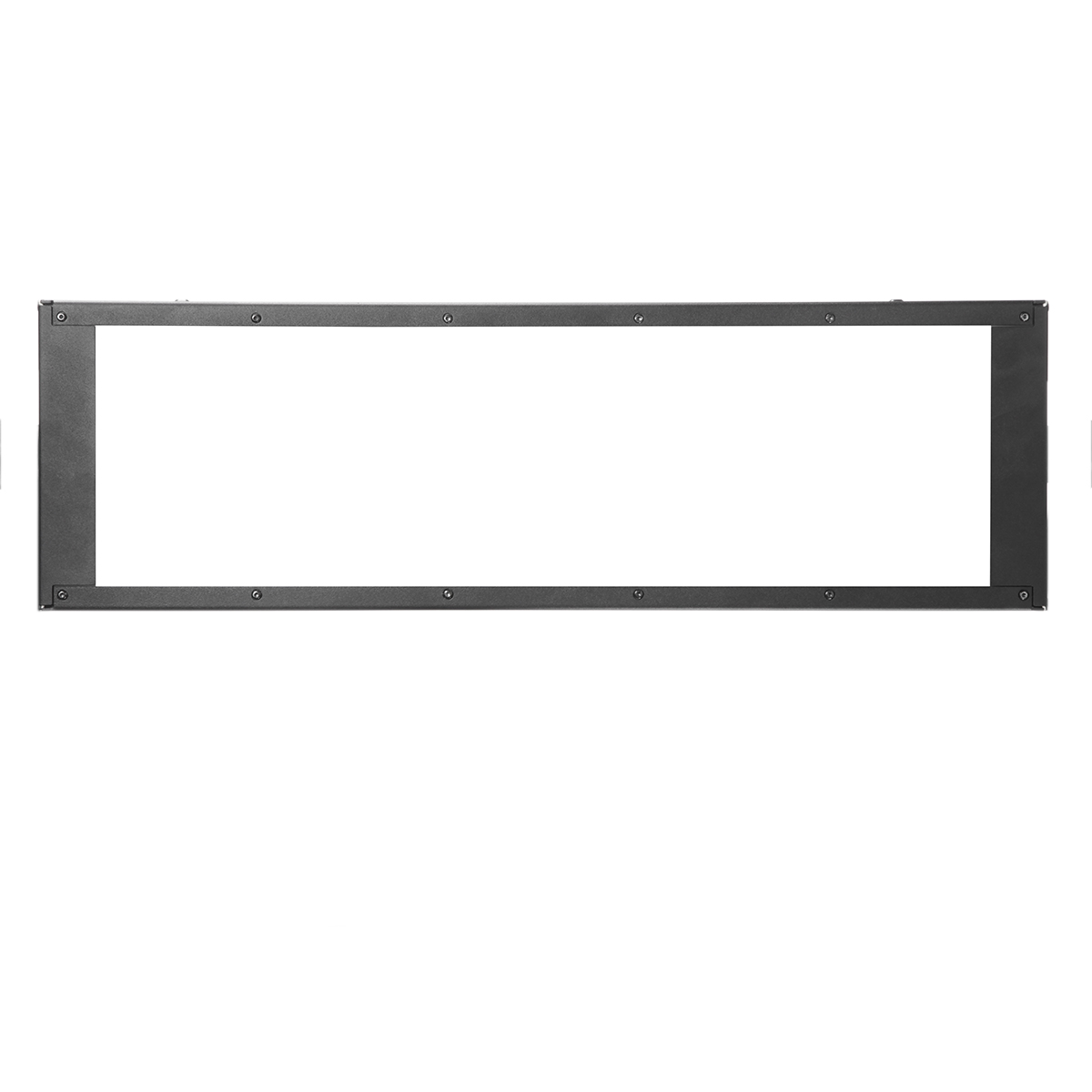LED softlight for lighting in film, photography and theatre
An LED softlight is a continuous light source that has been specially developed for lighting in film and photography. It uses LEDs to create an even, soft and glare-free light that casts soft shadows and provides natural skin tones. In our online store you will find LED softlights from various well-known manufacturers, including: ARRI, Kino Flo, VELVET, Aputure, BB&S, SWIT and many more.
Filter
–
%
Accessories:
w/o Yoke
|
Beam Angle:
15°
Gross: €2,915.50
€2,895.00
(15.37% saved)
%
Variante:
with DMX
|
Battery System:
V-Mount
Gross: €1,011.50
€1,008.00
(15.67% saved)
%
Accessories:
w/o Yoke
Gross: €1,350.65
€1,335.00
(14.98% saved)
%
Gross: €773.50
€765.00
(15.03% saved)
%
Accessories:
with Yoke
Gross: €2,499.00
€3,530.00
(40.51% saved)
%
Beam Angle:
Flood
Variants from €1,355.00
Gross: €1,803.15
€1,595.00
(5% saved)
%
Colour temperature:
5600 K
|
Lenght:
60 cm
Variants from €307.00
Gross: €436.73
Characteristics of LED Softlights:
- Soft light: By using diffusers or reflectors, the hard light from the LEDs is diffused, creating a soft, natural look.
- Flicker-free: LED softlights are flicker-free, so they can also be used for video recordings.
- Adjustable color temperature: Many LED softlights offer the option of adjusting the color temperature of the light to create different moods.
- Energy-efficient: LED softlights are significantly more energy-efficient than conventional light bulbs or halogen lamps.
- Long-lasting: LEDs have a long service life, so you will be able to enjoy your softlight for a long time.
Many areas of application for LED soft lights
Photography
- Portrait photography: LED softlights create subtle shadows and ensure natural skin tones.
- Product photography: Softlights allow products to be illuminated evenly and avoid harsh shadows.
- Food photography: Softlights make the colors of food glow and ensure an appetizing presentation.
- Fashion photography: Softlights can be used to create discreet lighting that highlights the model's clothing.
Film
- Interview lighting: Softlights create a pleasant light for interviews and ensure that the interviewees look good.
- Studio lighting: Softlights can be used as the main light or as a fill light to create different lighting moods.
- Set lighting: Softlights can be used to illuminate certain areas of a set and thus draw the viewer's attention.
- Outdoor lighting: SSoftlights can also be used outdoors, e.g. to brighten up shadow areas during night shots.
Theatre
- Basic lighting: LED softlights can be used as basic lighting for the stage to create uniform illumination.
- Accent lighting: Softlights can be used to highlight certain areas of the stage or actors.
- Effect lighting: Softlights can be used to create various lighting effects, e.g. sunrise or sunset, moonlight or candlelight.
- Backlighting: Softlights can be used to illuminate the background of the stage to create spatial depth.
To summarise, LED softlights can be used wherever uniform, soft and glare-free lighting is required
What control options are available for the new generation of LED softlights?
Wired control
- DMX: DMX is a standard protocol for controlling lighting systems. It enables the brightness, colour and other functions of the LED softlights to be controlled.
- RDM: RDM (Remote Device Management) is an extension of the DMX protocol that enables bidirectional communication with the LED softlights. For example, error messages can be retrieved or the firmware of the softlights can be updated.
Wireless control
- WLAN: Many LED softlights have an integrated WLAN module with which they can be controlled via an app or a web interface.
- Bluetooth: Bluetooth is another way of controlling LED softlights wirelessly. However, the range is shorter than with WLAN.
- Radio remote control: Radio remote controls offer a convenient way to control LED softlights remotely.
Additional information
- Some LED softlights can also be controlled via DMX or RDM controllable DMX devices.
- There are various apps and web interfaces for controlling LED softlights.
- Most LED softlights with wireless control have an integrated battery.
- When purchasing an LED softlight, make sure you choose the type of control that meets your requirements.
What are the advantages and disadvantages of wireless control of LED softlights?
Advantages:
- Convenience: The softlights can be conveniently controlled from a distance.
- Flexibility: The softlights can be positioned in places that are difficult to access.
- Time saving: The softlights can be configured quickly and easily.
Disadvantages:
- Range: The range of the wireless connection can be limited.
- Interference: Radio interference can affect the control of the softlights.
- Security: The wireless connection can be susceptible to hacker attacks.
Expand the versatility of LED softlights with the right accessories
- Diffusers: They diffuse the light and make it even softer. We have a large selection of diffusers from DoPchoice and Chimera, in addition to those offered by the lamp manufacturers.
- Reflectors: They direct the light and provide more targeted lighting.
- Honeycomb filters: They create a striped light pattern.
- Softboxes: They focus the light and create a soft, directed light.
- Carrying bags: They protect the softlight during transport.
- Stands: They allow the softlight to be mounted in different positions.












